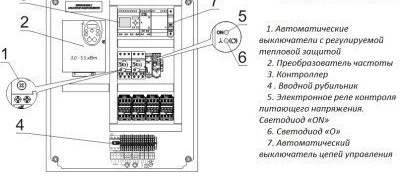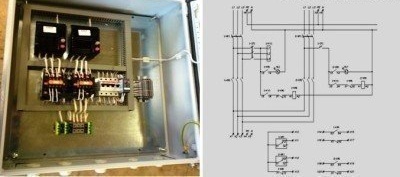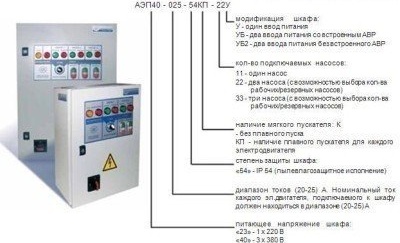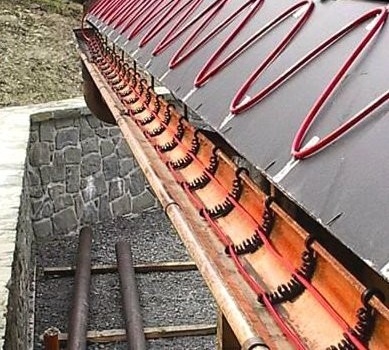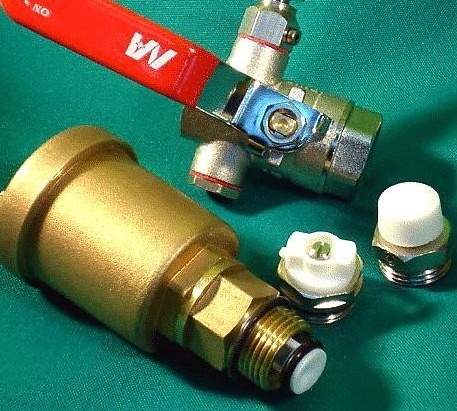Pump control cabinet - what is it and when should it be installed?
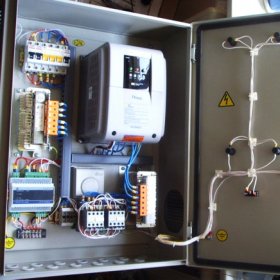
Having drilled a well at the summer cottage and installed a water supply system with a submersible pump, one involuntarily asks the question: how to make the pump work more productively, do not fail longer and have several operating modes? In addition, it would be nice to automate the water supply process, especially if there are two or more pumps. The solution is simple: install a switchboard or pump control cabinet.
Purpose and functions of control cabinets
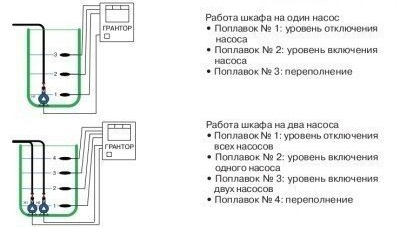
The drainage pump control circuit shows the adjustment options for one, two and three drainage pumps
Without a submersible pump, heating, water supply and fire fighting systems are not possible, and a control cabinet for a drainage pump is necessary to automate pumping liquids.
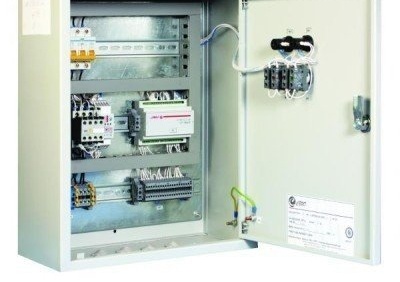
If there is no experience with control cabinets, it is better to entrust the setup and commissioning to a specialist
By installing a well pump control cabinet, the owner of the house will find rest and peace, as further electronic equipment will control the operation of the equipment.
A smooth safe start of the electric motor and regulation of the frequency converter will be ensured. Parameters such as pressure, water level and temperature will also be monitored.
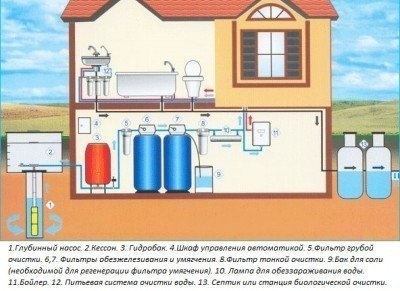
This diagram clearly shows where the pump control cabinet should be located and how it is combined with the water supply system
If a control cabinet for two pumps is used, then its functions are even wider:
- in an emergency with one pump, he quickly connects a second, standby;
- evens out wear and tear of units, regulating their shift work;
- when a simple one of the mechanisms prevents siltation;
- enables manual blocking of one of the pumps;
- contains control programs for two or more units;
provides information on each mechanism separately.

The diagram shows a diagram of the interaction of the control panel and the borehole pump with related equipment
Standard enclosures
Depending on the number of serviced units, the product may have a different content. For example, take the control cabinet of submersible pumps with asynchronous AC motors.
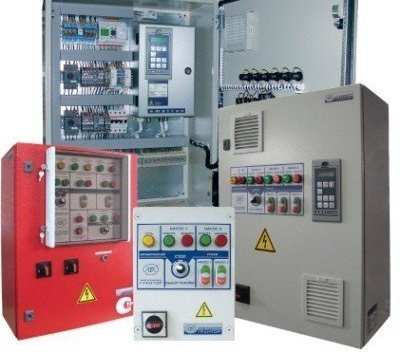
The dimensions of the cabinet depend on its filling and the functions performed. The metal frame is mounted on a wall or floor
Components:
- external control panel;
- controls (buttons, switches) by the system;
- frequency converter;
- water pressure meter (for automatic regulation of the operation of mechanisms depending on its level);
- dry run protection;
- light alarm (bulbs);
- circuit breakers to protect the motor and frequency converter;
- two load control modes: manual and automatic;
thermal relay.
Although the cabinet also provides manual control, most of the time it should work in automatic mode.
When the auto mode starts, the frequency converter smoothly drives the submersible pump motor until the water pressure reaches the set parameter. When active water withdrawal stops, the frequency decreases and the pump stops.
Custom control cabinets
Many manufacturers of pumps and pumping stations supply ready-to-use products. For example, Grundfos manufactures a range of cabinets for the automatic control of water supply and pumping.
But there is another option - the manufacture of products to order. What should be considered when ordering a control cabinet?
- The number of electric motors and their parameters (power, speed, voltage).
- Type of control (manual, automatic, remote).
- Engine start mode (direct, frequency converter, combined, smooth).
- Environmental conditions (humidity, temperature).
Cabinet Maintenance Features
Before you start using automation, you should carefully study the instructions and diagrams supplied with the product. Any circuit of the pump control cabinet displays the location of the electronics, the structure of the device as a whole, interfaces for connecting pumps, and motor protection channels.
Any manipulations with the mechanisms - cleaning, inspection, repair - must be carried out with the power turned off (the “Network” lamp does not light).
You should monitor the cleanliness of the filters of the ventilation grilles, most often they are replaceable. The radiator of the frequency converter and the fan must also be cleaned of dust. In order for the connections to function without interruptions, tighten the mounting screws.
Sometimes there are malfunctions in the system. Some of them are eliminated on their own, others - by specialists or after consultation with the manufacturer. For example, the sign “Alarm” - “low pressure” appeared on the board. This means that the protection “against dry running” has reacted - most likely, there is no water in the well. Until water appears, the pump will be blocked.
